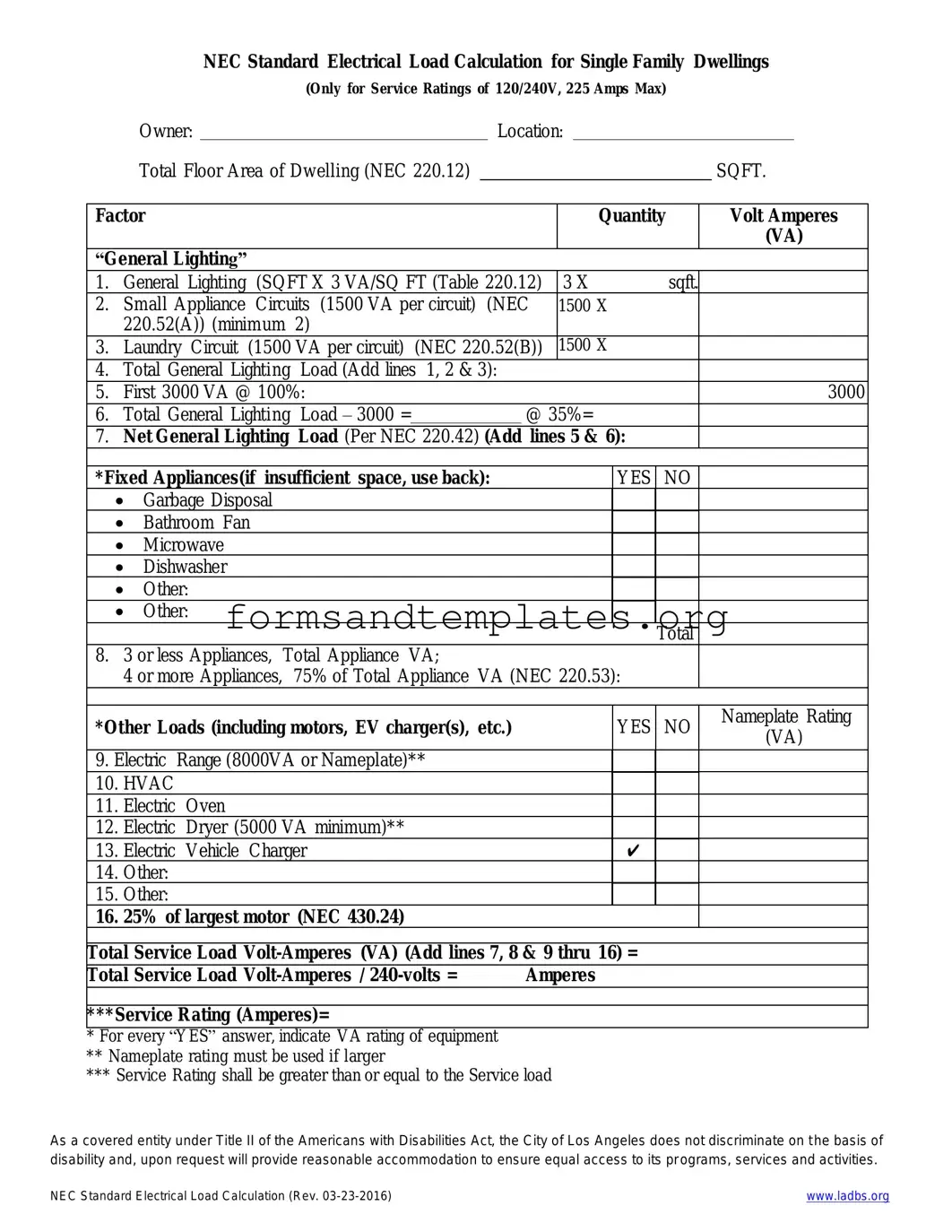The LADBS NEC Standard Electrical Load Calculation form is a document used to determine the electrical load requirements for buildings and structures in Los Angeles. This form helps ensure that the electrical systems are designed safely and efficiently, complying with the National Electrical Code (NEC) and local regulations.
This form is typically required for contractors, electricians, and property owners who are planning to install or modify electrical systems in residential, commercial, or industrial buildings. It is essential for anyone who needs to obtain electrical permits from the Los Angeles Department of Building and Safety (LADBS).
To complete the form, you will need to provide various details, including:
-
Type of occupancy (residential, commercial, etc.)
-
Square footage of the building
-
Number of circuits and their ratings
-
Appliance loads (e.g., HVAC, kitchen equipment)
-
Any special loads (e.g., elevators, electric vehicle charging stations)
Accurate information is crucial to ensure the electrical system can handle the anticipated load.
Why is it important to calculate electrical loads?
Calculating electrical loads is vital for several reasons. It helps prevent overloading circuits, which can lead to electrical fires or equipment damage. Additionally, accurate load calculations ensure compliance with safety standards and regulations, promoting the overall safety and functionality of the electrical system.
The load calculation is performed by assessing all the electrical devices and systems that will be used in the building. This includes:
-
Identifying all fixed appliances and their power ratings.
-
Calculating the total wattage for lighting, heating, and cooling systems.
-
Considering demand factors as specified in the NEC.
-
Summing all loads to determine the total demand.
Following these steps ensures that the calculated load is accurate and reflective of actual usage.
Failure to submit the LADBS NEC Standard Electrical Load Calculation form can result in delays in obtaining necessary permits. Without these permits, electrical work may not be legally conducted, leading to potential fines or penalties. It is advisable to complete and submit the form to avoid complications during construction or renovation projects.
Yes, the LADBS allows for electronic submissions of the NEC Standard Electrical Load Calculation form. This can streamline the permitting process and reduce paperwork. Check the LADBS website for specific instructions on how to submit electronically and any required formats.
There may be fees associated with the submission of the form, depending on the scope of the project and the permits required. It is important to review the LADBS fee schedule or contact their office for detailed information regarding any applicable fees.
Where can I find additional resources or assistance?
For additional resources or assistance, you can visit the LADBS website, where you will find guides, FAQs, and contact information for support. Local electrical contractors or licensed electricians can also provide valuable insights and help with completing the form accurately.

